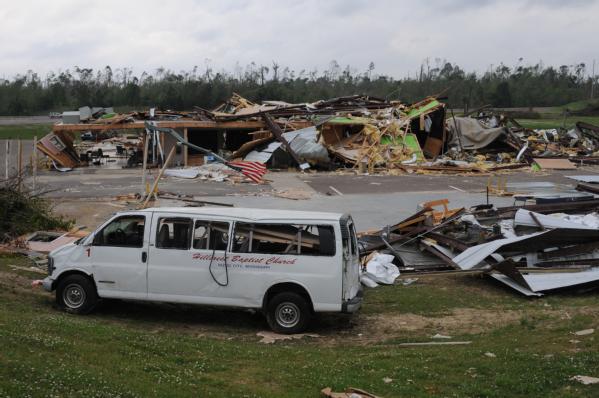
Deadly Dixie: Tornado Alley's Lethal Neighbor

Storm chasers flock to Tornado Alley each spring to see the monster storms in person, but the real action is farther southeast. It's just more difficult to see.
Often under the cover of night, the fastest, longest-lasting and deadliest twisters strike the Southeast, known as Dixie Alley to weather buffs. New research suggests that Dixie Alley is really just a deadly extension of the more famous Tornado Alley in the Great Plains. There's no dead space between the alleys where the tornado risk stops and then starts again.
"There's not enough to say 'here's the breaking point,'" said Grady Dixon, study team member and a climatologist and meteorologist at Mississippi State University in Starkville.
The Great Plains is still tornado country, but south central Mississippi has the most days per year with a tornado within 25 miles (40 kilometers), a better measure of tornado risk, the study team found.
"That was a big surprise," Dixon told OurAmazingPlanet
Despite the Southeast's deadly tornadoes, the tornado risk map is Great Plains-centric. That needs to change to include Dixie Alley, which would maintain tornado awareness throughout the year, Dixon said. [Related: Twisted Science: Why Tornado Forecasting Is Tough ]
Textbook twisters
Sign up for the Live Science daily newsletter now
Get the world’s most fascinating discoveries delivered straight to your inbox.
Textbook tornadoes form in the United States where warm, moist Gulf of Mexico air collides with cool, northern air, creating massive storms . Most of the Earth's tornadoes form in Tornado Alley, bordered by the Dakotas to the north, the Gulf Coast to the south, the Rocky Mountains to the west and the Appalachian Mountains to the east.
"If you want to know the most likely place to see a tornado, Colorado may be the best place to go," Dixon said. "But they are sitting in one spot."
Tornadoes don't lollygag in Dixie Alley, which spreads from the Lower Mississippi Valley to the Upper Tennessee Valley.
"In Mississippi, they tend to last longer and move faster," Dixon said.
That's a lethal combination. In 2010, Mississippi led the nation with three killer tornadoes and 13 of the nation's 45 tornado-related deaths.
Deadly Dixie
And unlike the flat, grass-covered plains, which provide plenty of photo opportunities, taking a pretty picture of a tornado is hard to do in Dixie Alley for the same reasons that their twisters are so deadly.
"Down here in the Southeast we've got a lot more trees, so it makes them harder to see," said Brian Koeneke, a meteorologist with the National Weather Service in Jackson, Miss.
Dixie Alley also has more night tornadoes and a longer tornado season compared to Tornado Alley, said Greg Carbin, the warning coordination meteorologist with the Storm Prediction Center in Norman, Okla.
"They don't see the peak that we often see in the Plains," Carbin said. "There they have a threat that kind of continues."
To make matters worse, Dixie Alley is home to many manufactured houses and mobile homes that have weak walls and poor or non-existent foundations.
"You don't need as strong of a tornado to have fatalities," Carbin said.
- 7 Ways the Earth Changes in the Blink of an Eye
- Skyscraper Storms: 7 Big City Tornadoes
- 12 Twisted Tornado Facts
Email OurAmazingPlanet staff writer Brett Israel at bisrael@techmedianetwork.com. Follow him on Twitter @btisrael.









